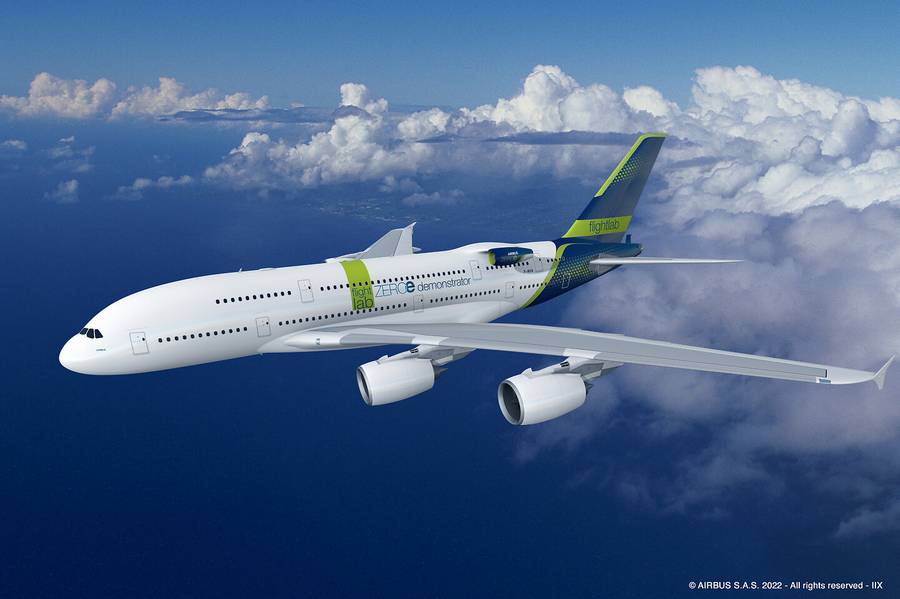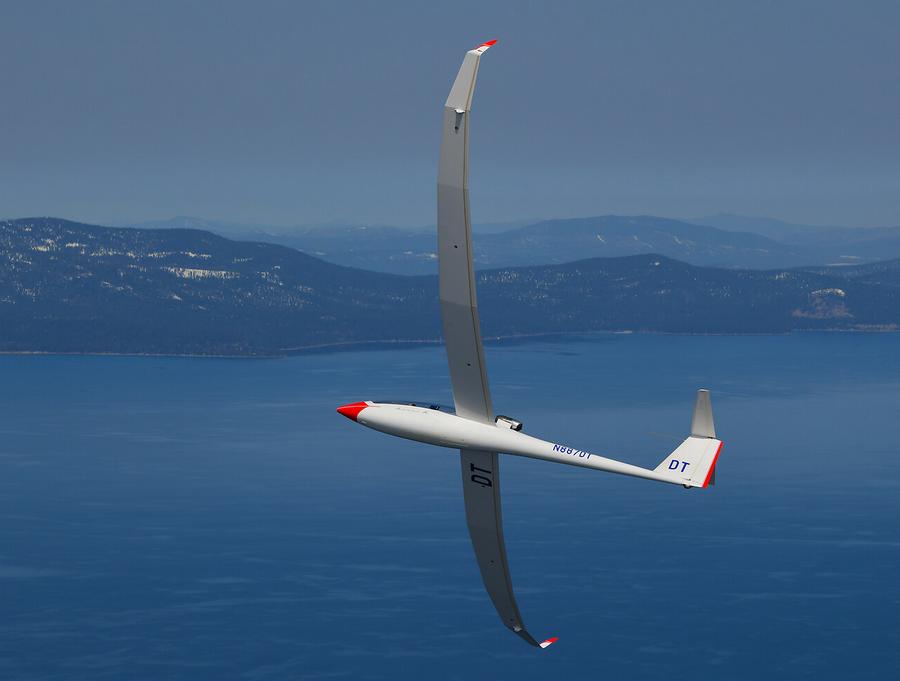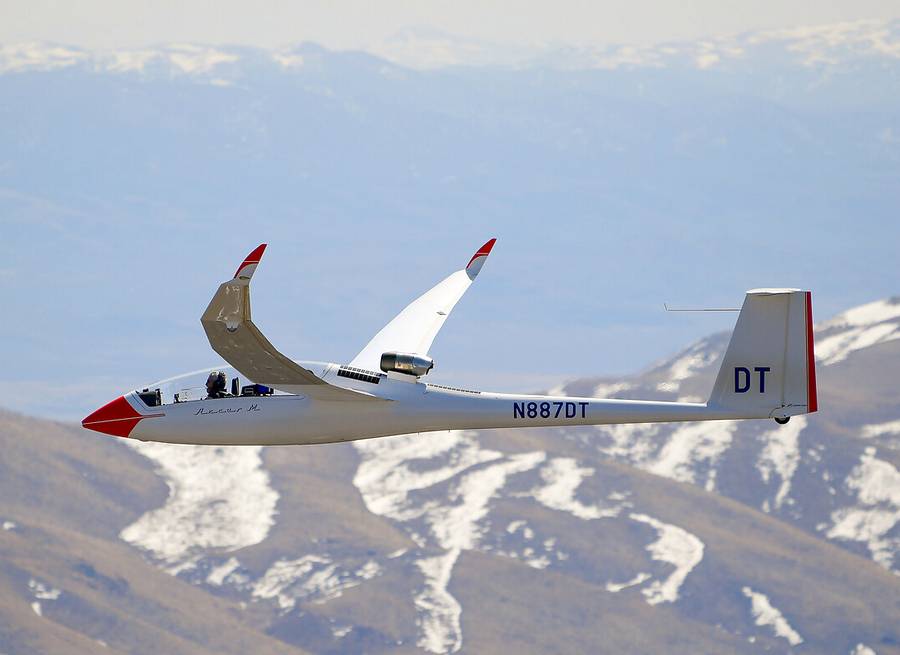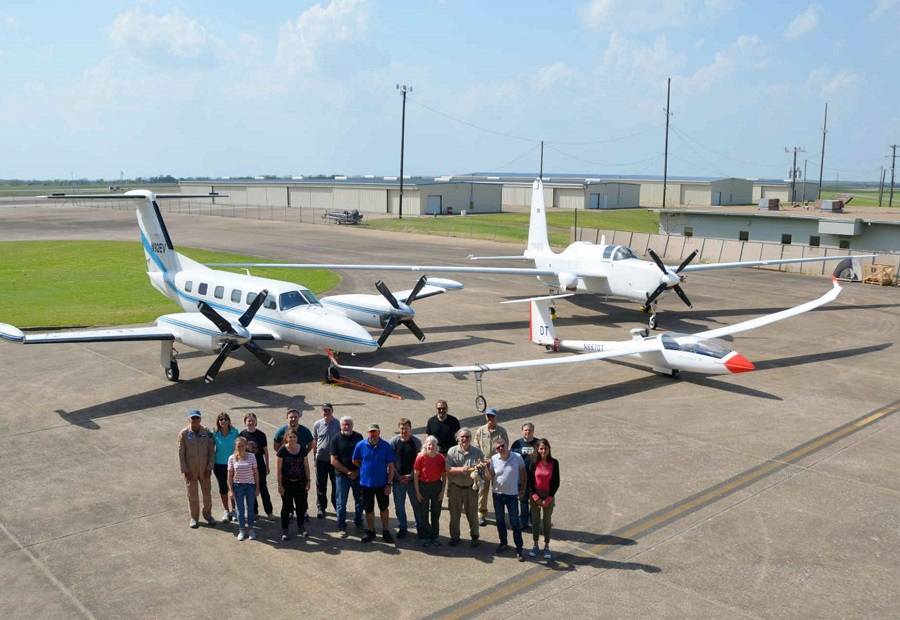Will future aircraft using hydrogen as fuel create persistent contrails in the atmosphere? This is something Airbus wants to test – quickly!
We have seen that Airbus is putting a lot of emphasis on the future of hydrogen-powered aircraft. The manufacturer runs multiple development programs relating to hydrogen because the technology needs to address many challenges. Carrying hydrogen on board can’t be done in the same way as jet fuel. Hydrogen fuel cells pose their own challenges with heat dissipation. Plus, ground storage of hydrogen and its entire supply chain, are a huge challenge.

And then there is the matter of the contrails that these hydrogen aircraft will leave behind. This specifically relates to aircraft that use hydrogen combustion. We have seen that there will be at least two “flavours” of hydrogen aircraft. Hydrogen fuel cell aircraft will use H2 to generate electricity, driving electric motors to create propulsion.
Hydrogen combustion is the other option. These aircraft will have jet engines (or turboprops) that burn hydrogen instead of jet fuel. It is this use of hydrogen that Airbus and others want more information on, with regard to contrails. Dense, persistent high-altitude contrails could have greenhouse effects.

Hydrogen And Contrails – The Airbus A380 Flight Lab
The problem here is that it is very difficult to model the nature of contrails coming from jet engines that burn hydrogen. Finding out this information is rather urgent, as Airbus has to decide on a future direction. As we have seen, Airbus will fly one of its A380s as a hydrogen flight lab. This aircraft will feature a fifth engine (GE Passport), the size we normally see on business jets.
Airbus will mount this engine on the upper fuselage of the aircraft. This is to ensure that the engine’s exhaust gasses and those of the A380’s standard engines are far apart. This will allow a suitably-equipped chase aircraft to sample the exhaust gasses of the test engines. And obviously, it will make it easier to compare the contrails of hydrogen combustion with those of the other engines.

The problem with this, as Leeham News explains, is that preparing this A380 for this test will take years. Airbus plans to start testing the A380 hydrogen flight lab with the fifth engine in place, in 2026. That’s quite far away. Airbus hopes to have a commercial aircraft running on hydrogen in service in the next decade. 2026 will be very late for the company to discover that it can’t rely on hydrogen combustion, because of contrails.
A Quicker Path To Testing Hydrogen Combustion Contrails
This is where a humble glider (or a rather modern one) enters the picture. Schempp-Hirth in Germany designed the Arcus glider just over a decade ago, offering it in several different flavours. Customers could the ‘base’ model, as a simple glider, or variants with small, two-stroke engines. Depending on the engine’s size, it is either a “sustaining” engine, to keep the glider in the air longer, or a self-launch engine. The company even made Arcus-E, with an electric motor.

Obviously, none of these variants would help with testing for contrails involving gas turbines burning hydrogen. But it so happens that a company in the United States created a version of the aircraft called the Arcus-J. “J” is, you’ve guessed it, for “jet engine”. This is the aircraft that Airbus plans to use, to test for hydrogen combustion contrails.
Airbus calls this the “Blue Condor” program. It will use two of these jet-powered gliders, one in its standard configuration, the other burning hydrogen. The gliders are capable of flying at altitudes high enough to generate contrails. As with the A380, a chase aircraft flying behind the jet gliders will see their contrails, plus measure and compare their emissions.

Some Interesting Test Aircraft
A key partner for the Airbus Blue Condor project is DLR, the German Aerospace Centre. The facility will organize the atmospheric testing, something it has helped Airbus with in previous projects. DLR will use a mix of existing and new measuring equipment on its chase aircraft, as part of the project. The chase aircraft, a Grob Egrett, can also tow the gliders, releasing them at the right altitude! DLR has already tested this, with a glider burning normal fuel.

It will be interesting to see if other aviation research teams will conduct similar tests. There are other companies out there with airliners configured to mount a smaller jet engine on the fuselage. Could we soon see such an aircraft testing hydrogen combustion and contrails, beating Airbus’ A380 flight lab tests in 2026?
Whatever the answer, Airbus and DLR will definitely beat everyone else, with the Arcus-J hydrogen tests. The modified aircraft should fly before the end of the month, initially using a mix of hydrogen and kerosene. It will initially remain at lower altitudes, then fly exclusively using hydrogen next November. The high-altitude hydrogen flights will take place in 2023.



